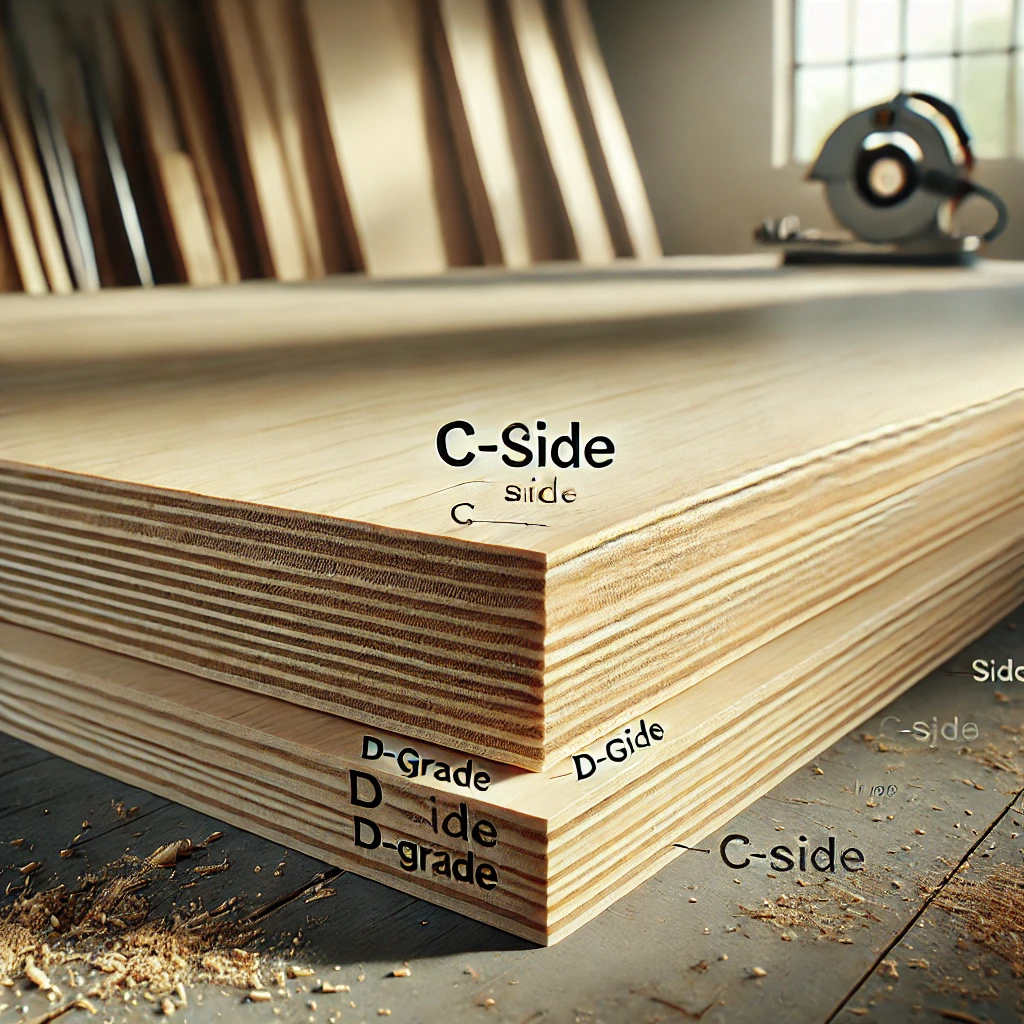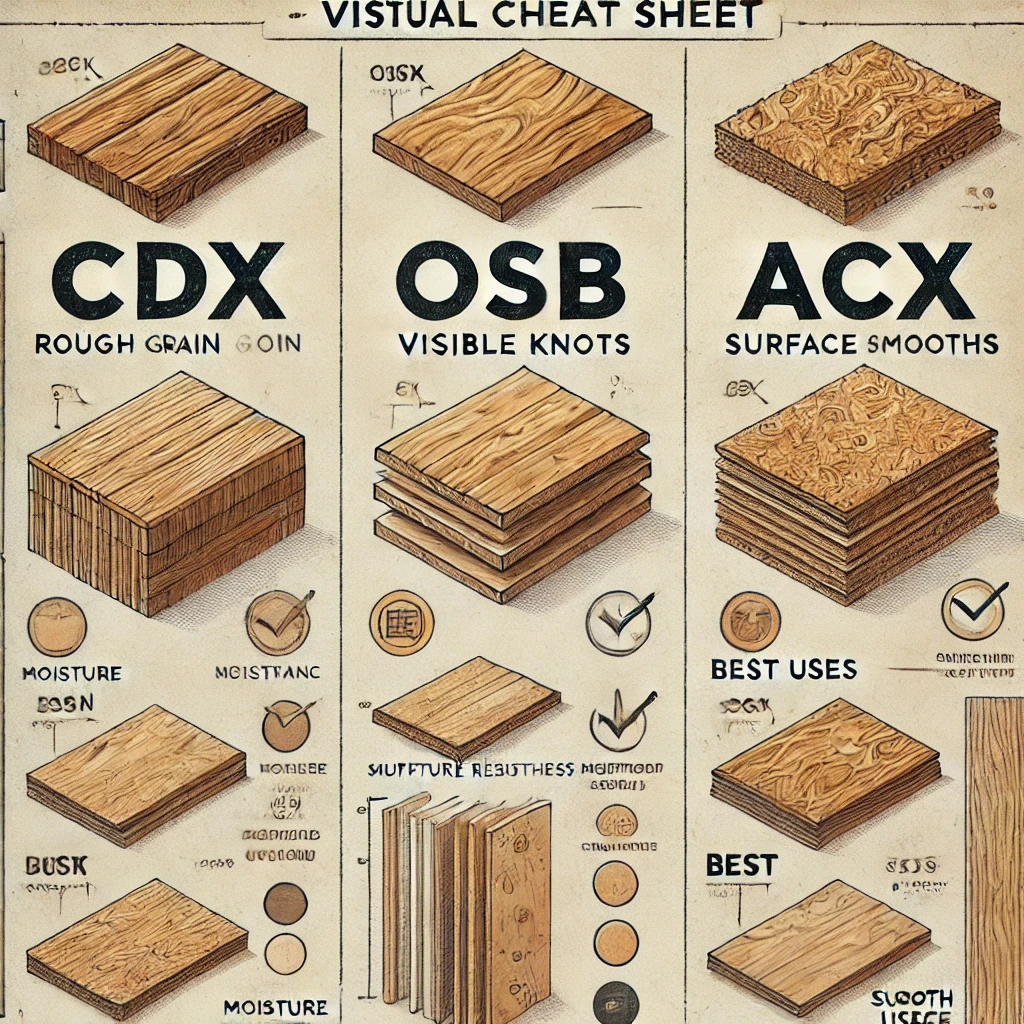If you’ve ever found yourself staring at stacks of wood in the hardware store, wondering what CDX plywood actually is — you’re not alone. CDX plywood is one of the most commonly used materials in construction and DIY projects, but its name doesn’t exactly explain much. In this guide, we’ll break down what it means, when to use it, and why it’s still a top pick for builders and homeowners in 2025.
🤔 What Does CDX Plywood Actually Mean?

“CDX” isn’t some fancy brand name — it’s a grade.
- C = One side has moderate flaws (think knots and patches).
- D = The back side is rougher, with more imperfections.
- X = The glue used is rated for exposure to moisture (not waterproof, but it won’t fall apart in light rain).
So, CDX is basically construction-grade plywood, strong and cheap, made for stuff like subfloors and roof sheathing — places where no one’s going to care how it looks.
🛠️ Best Uses for CDX Plywood
If you’re building something where function matters more than appearance, CDX is a solid pick. It’s often used for:
- 🧱 Subfloors (under tile, laminate, or carpet)
- 🏠 Roof and wall sheathing
- 🛠️ Shed walls and floors
- 📦 Utility shelves or garage workbenches
- 🔨 Temporary outdoor forms or ramps
⚠️ Pro tip: CDX is not what you want for visible furniture or cabinets. For that, go with something smoother like ACX plywood or sanded birch panels.
🌧️ Can CDX Be Used Outdoors?
Short answer: yes, but only if you seal it.
CDX can handle moisture for short periods, which is perfect during a build when you might get hit with a surprise rainstorm. But if it stays wet too long, it’ll absorb water and eventually start to break down.
If you’re using it for outdoor projects — like a doghouse, shed floor, or garden box — make sure to:
- Seal it with a waterproof wood sealer
- Elevate it off the ground
- Keep it covered or painted
✅ Check out: How to Waterproof Plywood for Outdoor Projects for step-by-step instructions.
🔍 CDX vs. OSB vs. ACX (Quick Comparison Table)

Here’s a quick look at how CDX compares to other common sheet materials:
| Feature | CDX Plywood | OSB (Oriented Strand Board) | ACX Plywood |
|---|---|---|---|
| Surface | Rough on both sides | Textured, chip-like | Smooth on one side |
| Moisture Resistance | Moderate (short-term) | Slightly better but slow to dry | Good if sealed |
| Strength | High | Very strong | Strong + nice looking |
| Cost | Budget-friendly | Usually cheapest | More expensive |
| Best Use | Subfloors, roofs, sheds | Walls, roofing | Cabinets, furniture |
🛒 Handy Tools & Supplies (Picked by Real DIYers)
If you’re working with CDX plywood, here are a few Amazon picks that make the job easier. These are the same types of tools I keep in my shop:
- 🔧 Circular Saw – DEWALT 7-1/4” Circular Saw (Amazon) – Clean cuts, plenty of power
- 🧼 Wood Sealer – Thompson’s WaterSeal Clear Wood Protector – A must for outdoor CDX
- 📏 Edge Guide – Kreg Rip-Cut Circular Saw Guide – Makes straight cuts easy
- 🪚 Sawhorses – Folding Sawhorse Set (Amazon) – Sturdy, foldable, and super handy
🔨 Working With CDX: Tips From the Shop
- ✅ Cut it with a sharp blade – Use a good circular saw or table saw to minimize splinters.
- ✅ Seal the edges – The edges suck up moisture fast. Use paint or wood sealer to protect them.
- ✅ Stack flat – Store it on a flat surface indoors if possible, or at least off the ground and covered.
- ✅ Label the sides – Remember: the C side is better looking. Face that outward if it matters even a little.
💬 Builder’s tip: CDX can smell a little funky when it gets wet. That’s totally normal — just make sure it dries out before sealing or painting.
🤷♀️ Should You Use CDX or Something Else?
Use CDX if:
- You’re building something structural
- The finish doesn’t really matter
- You want to save money
Skip CDX if:
- It’s a visible project (furniture, cabinets, etc.)
- You need it to last outdoors without sealing
- You’re picky about smoothness or appearance
🙋♂️ CDX Plywood FAQs
Can you paint or stain CDX plywood?
You can paint it, yes. Staining it? Not worth the trouble — it’s too rough and inconsistent.
What thickness is best for subflooring?
Go with 3/4″ for subfloors. 1/2″ works for roof sheathing or wall sheathing.
Is CDX stronger than OSB?
They’re close, but CDX tends to handle nails and screws a little better, especially in damp conditions.
Can CDX be used for garage walls?
Absolutely—especially if you’re finishing them yourself. Seal or paint it, and you’re good to go.




